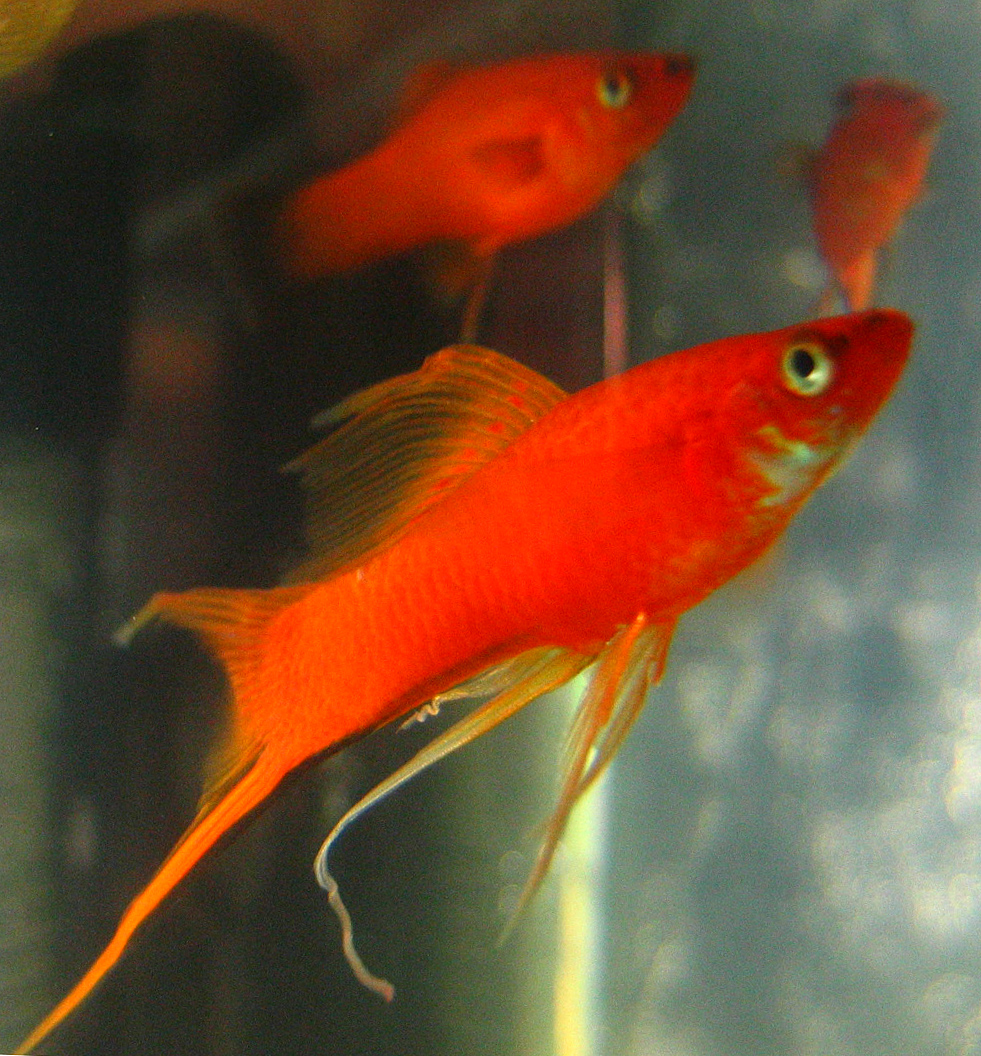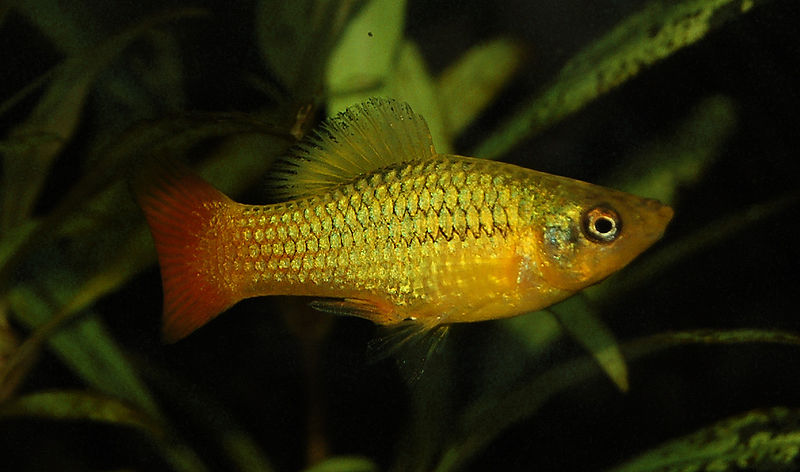What is Sexual Selection?
Charles Darwin proposed a mechanism for adaptation that would explain the differences seen between male and female body and behavior characteristics, and he called it sexual selection. Darwin’s explanation is in his book, The Descent of Man (Volume 1, Volume 2.)
Sexual selection is a process like natural selection, but the interactions affecting fitness of individuals must have something to do with reproduction, and mostly this has been interpreted as the suite of traits, morphology, and behavior associated with mate choice.
This is further divided into intrasexual selection (competition among members of one sex) and intersexual selection (choice by one sex of mates of the other sex). In general, this has been seen as male competition and female choice of mates. The emphasis on female choice was controversial at the time Darwin proposed sexual selection.
Bluehead Wrasse
Bluehead wrasse are so called for the coloration of the terminal phase “supermale”, which features a bright blue coloration at the head. (See also Wikipedia.)
.jpg)
The picture shows the terminal phase supermale on the right and three initial phase fish on the left.
Bluehead wrasse eat plankton, certain fish eggs, and also do cleaning behavior, picking off ectoparasites from other fish species.
Sexually mature initial phase fish mate in groups, rushing upward in a group to a point in midwater and releasing gametes together.
Video of bluehead wrasse on reef, though the narrator uses “intermediate phase” instead of “initial phase”, and misses entirely the initial phase group mating behavior.
See group mating at 1:40 and 2:30
The supermales mate with an individual female (out of a harem), again using a dash to midwater and joint release of gametes.
Where the supermale is removed from a group, the largest fish remaining becomes a new supermale, changing sex if female. Once a supermale, no further change is observed.
The supermale body coloration is linked to establishing territory. The blue color is actually at the point of maximum transmittance in sea water, meaning this territorial marker is visible at the greatest distance possible. Its pre-spawning display to females features a darkening of the tips of the pectoral fins, and is not visible at long range.
Bibliography:
The Spawning, Growth, and General Behavior of the Bluehead Wrasse, Thalassoma Bifasciatum (Pisces: Labridae) (Links to full PDF.)
Design of an Intention Signal in the Bluehead Wrasse (Thalassoma bifasciatum)
Scorpionflies
Female choice is straightforward: select a male who brings a large “nuptial gift” of a prey item.
Video of male scorpionflies fighting over prey item.
Female eating “nuptial gift” during mating
Peacocks
An extreme case of sexual dimorphism, male peacocks are known for their elaborate displays.
Such costly display ornamentation is thought to signal male health to females, who make choices that tend to prefer males with better parasite resistance.
Prairie Chickens
Another lekking species, prairie chicken males have a stereotyped presentation call to females. Females observe males on the lek and select mates.
Another lekking video that gives a better indication of scale of lek, but with annoying music added
Black-tail deer
Male deer, including black-tail deer, often engage in fighting over territory.
Deer are some of the most dangerous animals in captivity because the males will fight just about anything around, including people.
Sensory bias
Female choice may lead sexual selection, in that biases in female preference should precede adaptations in males.
Female preference predates the evolution of the sword in swordtail fish
Genus Xiphophorus includes swordtails (the males have a extension of the lower edge of the caudal fin) and platies (males have the usual shape caudal fin).


Adding a “sword” to male platies resulted in female platies preferring them.
Sources
Bluehead wrasse image from Wikimedia Commons.